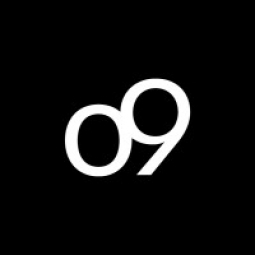Technology Category
- Application Infrastructure & Middleware - Data Visualization
- Platform as a Service (PaaS) - Application Development Platforms
Use Cases
- Demand Planning & Forecasting
- Inventory Management
About The Customer
The customer is a leading manufacturer of water and housing products that are designed to solve everyday, real-life challenges and improve home quality. They are pioneers in their field, constantly innovating to meet the changing needs of their customers. However, they were facing significant challenges in demand planning due to low forecast accuracy and heavy reliance on manual processes. Their planning processes were inconsistent and inefficient, varying widely across different countries. They needed a solution that could streamline their demand planning process, improve forecast accuracy, and enable them to react quickly to changes in demand.
The Challenge
The customer, a pioneer in water and housing products, was facing significant challenges in demand planning due to low forecast accuracy and heavy reliance on Excel spreadsheets. The company's demand planners were spending a lot of time manually copying data from sheets and manipulating it to generate demand scenarios. This manual process was not only time-consuming but also limited the company's ability to react quickly to changes in demand. Furthermore, the company's forecasting process was flawed as it predominantly used only lagging indicators, resulting in low forecast accuracy. The planning processes also varied widely across countries, with no single process or overview, leading to inconsistencies and inefficiencies.
The Solution
The company adopted o9's unique integrated platform to overcome their demand planning challenges. With o9, the company could still use Excel files but no longer needed to manually move data, saving valuable time. o9's platform also improved the company's forecasting process by incorporating internal and external drivers of demand, such as GDP, into its machine learning forecasting capabilities. This helped improve forecast accuracy. Additionally, o9's platform provided the capability to connect all planning processes across time horizons on a single integrated, cloud-native platform, eliminating inconsistencies and inefficiencies. The o9 Enterprise Knowledge Graph was used to build demand knowledge models that incorporated leading indicators of sell-out, such as trade promotions and marketing initiatives. The company also leveraged o9's open architecture to use best-in-class algorithms from R and Python to optimize their forecast.
Operational Impact
Quantitative Benefit

Case Study missing?
Start adding your own!
Register with your work email and create a new case study profile for your business.
Related Case Studies.

Case Study
Hospital Inventory Management
The hospital supply chain team is responsible for ensuring that the right medical supplies are readily available to clinicians when and where needed, and to do so in the most efficient manner possible. However, many of the systems and processes in use at the cancer center for supply chain management were not best suited to support these goals. Barcoding technology, a commonly used method for inventory management of medical supplies, is labor intensive, time consuming, does not provide real-time visibility into inventory levels and can be prone to error. Consequently, the lack of accurate and real-time visibility into inventory levels across multiple supply rooms in multiple hospital facilities creates additional inefficiency in the system causing over-ordering, hoarding, and wasted supplies. Other sources of waste and cost were also identified as candidates for improvement. Existing systems and processes did not provide adequate security for high-cost inventory within the hospital, which was another driver of cost. A lack of visibility into expiration dates for supplies resulted in supplies being wasted due to past expiry dates. Storage of supplies was also a key consideration given the location of the cancer center’s facilities in a dense urban setting, where space is always at a premium. In order to address the challenges outlined above, the hospital sought a solution that would provide real-time inventory information with high levels of accuracy, reduce the level of manual effort required and enable data driven decision making to ensure that the right supplies were readily available to clinicians in the right location at the right time.

Case Study
Hardware Retailer Uses Data Warehouse to Track Inventory
Ace tracked which products retailers ordered, when they were ordered and shipped. However, the company could not track or forecast actual sales. Data used for reporting was up to a one-week old, owing to performance and data cleansing issues. Requirement to integrate wholesale and inventory data with POS data to help drive key business decisions, improve category management, lower inventory costs and optimize pricing. Reliance on custom coding to integrate POS data was excessively resource intensive and led to major performance constraints.

Case Study
Remake Enterprise-to-production System
The client was running a legacy material flow tracking system and wanted to replace the system with a more effective one as the system was increasingly expensive to maintain and support and also was not extendable. The client's IT landscape was filled with modern applications and it was difficult to interface the material flow tracking system with modern applications.

Case Study
Expertech - Capital Tool Inventory
Costly tools used to splice fiber optic cables are an important part of Expertech’s operational and capitalized expenses, but the company did not have an automated system in place to track their tools and optimize their usage. The existing data in its tracking system was inaccurate and required manual updating, making it essential for the company to implement an efficient process to track and follow up on its capital tool inventory.









